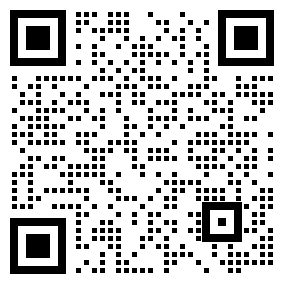What is a wireless sensor?
The component module of the wireless sensor is packaged in a shell, and it will be provided with power by a battery or a vibration generator when working, constituting a wireless sensor network node, which is composed of randomly distributed micro-nodes integrated with sensors, data processing units and communication modules, and constitutes a network through self-organization.
It can collect the digital signal of the device through the wireless sensor network transmission to the wireless gateway of the monitoring center, directly into the computer for analysis and processing. If needed, the wireless sensor can also transmit the entire time history signal collected in real time.
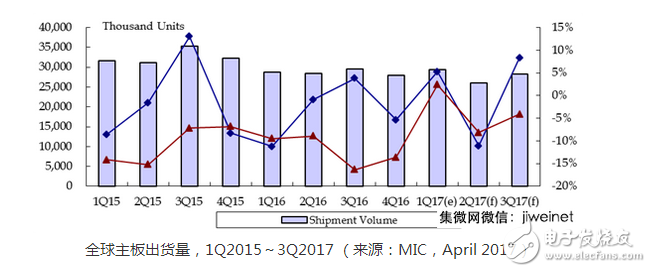
How wireless sensors work:
WSN typically consists of a host or "gateway" that communicates with a large number of wireless sensors via a radio communication link. Data collection is done at the wireless sensor node, compressed, and transmitted directly to the gateway, or if required, other wireless sensor nodes can be utilized to pass the data to the gateway.
The gateway then guarantees that the data is input to the system.
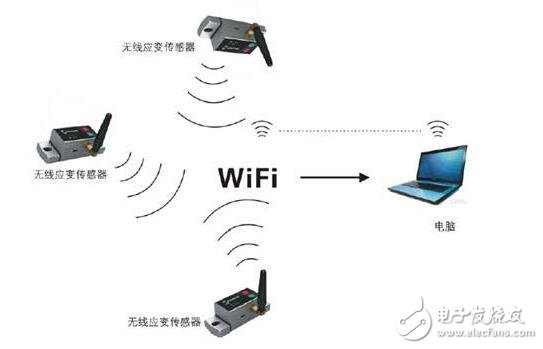
Each wireless sensor is regarded as a node, with wireless communication capabilities, but also has a certain degree of signal processing and network data intelligence.
Depending on the type of application, each node can have a specified address. The following figure shows a general structure diagram for a node. It typically includes a sensing device, a data processing microcontroller, and a wirelessly connected RF module. Depending on the definition of the network, the RF module can act as a simple transmitter or transceiver (TX/RX).
When designing nodes, it is important to pay attention to current consumption and processing power. The memory of a microcontroller is very dependent on the software stack used.
Wireless sensors are widely used in what aspects:
Sensor nodes can continuously carry out data acquisition, event detection, event identification, location monitoring and node control. These characteristics and wireless connection modes of sensor nodes make the application prospect of wireless sensor networks very broad. It can be widely used in environmental monitoring and forecasting, health care, smart home, building condition monitoring, complex machinery monitoring, urban traffic, space exploration, large-scale workshop and warehouse management, as well as airport, large-scale industrial park security monitoring and other fields. With the deep research and wide application of wireless sensor networks, wireless sensor networks have gradually penetrated into every field of human life and attracted the attention of the industry.

Application in ecological environment monitoring and forecasting
In terms of environmental monitoring and forecasting, wireless sensor networks can be used to monitor crop irrigation, soil air conditions, the environment and migration of livestock and poultry, wireless soil ecology, large-scale surface monitoring, etc., can be used for planetary exploration, meteorological and geographical research, flood monitoring, etc. Based on the wireless sensor network, several sensors can be used to monitor rainfall, river level and soil moisture, and use this to predict flash floods and describe ecological diversity, thus carrying out ecological monitoring of animal habitats. Population complexity can also be studied by tracking birds, small animals and insects.
As people pay more and more attention to the environment, the scope of environmental science is more and more extensive. Collecting raw data by traditional means is a difficult task. Wireless sensor network provides convenience for random field research data acquisition, especially in the following aspects: millions of sensors scattered in the forest can provide the fastest information for forest fire location determination; The sensor network can provide the location of chemical contamination and determine the chemical pollution source, without the need to manually venture into the contaminated area; Determine rainfall conditions to provide accurate information for flood control and drought relief; Real-time monitoring of air, water and soil pollution; Monitoring the composition of the ocean, atmosphere and soil.
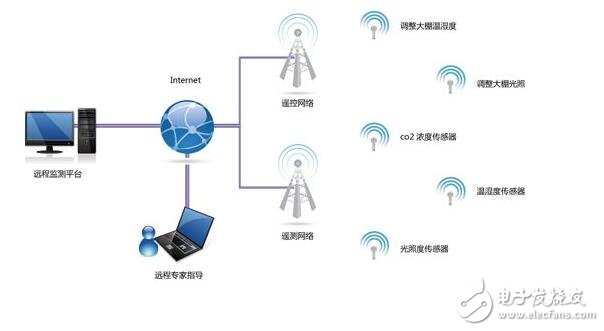
Crossbow's MEP collection is one of them. This is a small end-user network that is mainly used to detect environmental parameters. The system includes two MEP410 environment sensor nodes and four MEP510 humidity/temperature sensors. The temperature and pressure sensor is composed of temperature sensing element and detection circuit. Temperature sensors can be roughly divided into contact and non-contact types from the perspective of use. The former is to make the temperature sensor directly contact with the object to be measured to sensitive the temperature change of the object to be measured, while the latter is to make the temperature sensor and the object to be measured to leave a certain distance to detect the infrared radiation emitted from the object to be measured, so as to achieve the purpose of temperature measurement. Traditional thermocouples, thermistors, thermistors and semiconductor temperature sensors convert the temperature value through a certain interface circuit to output analog voltage or current signals, which can be measured and controlled. The analog temperature sensor and the digital conversion interface circuit are integrated together to become a digital temperature sensor with digital output capability. With the rapid development of semiconductor technology, the semiconductor temperature sensor and the corresponding conversion circuit, interface circuit and various other functional circuits are gradually integrated together, forming a powerful, accurate and inexpensive digital temperature sensor.
Application in traffic management
In traffic management, the wireless sensor network system installed on both sides of the road can monitor the road condition, water condition and highway noise, dust, gas and other parameters in real time, so as to achieve the purpose of road protection, environmental protection and pedestrian health protection.
In 1995, the U.S. Department of Transportation proposed the National Intelligent Transportation System Project Plan, which is expected to be fully operational by 2025. This new system will effectively use a network of sensors for traffic management, not only to enable the car to travel at a certain speed and automatically maintain a certain distance between the front and rear vehicles, but also to provide the latest news on road congestion, recommend the best driving route and remind the driver to avoid traffic accidents.
Since the system will apply a large number of sensors to maintain contact with various vehicles, people can use computers to monitor the operation of each car, such as brake quality, engine speed regulation time and so on. Depending on the specific situation, the computer can automatically adjust to keep the vehicle in the optimal operating state of high efficiency and low consumption, and warn about potential failures, or directly contact the accident rescue center. At present, in the United States, the city of Pittsburgh, Pennsylvania, has built such a traffic information system, and through radio and other media attached a certain commercial value.

The sensor nodes on both sides of the road can monitor road damage and road inequality in real time, and can monitor the water on the road during heavy rain, and send these data to the relevant departments in real time through the wireless sensor network, so as to facilitate the relevant departments to repair the road or issue road water alarm and eliminate dangerous situations. The sensor nodes on both sides of the road can also monitor the environmental conditions near the road in real time, such as noise, dust and toxic gas concentration parameters, and send these data out in real time through the wireless sensor network system, so as to facilitate the relevant departments to monitor the road conditions. Senera's systems can be used to monitor road environments such as Bridges, viaducts, and highways. For many old Bridges, the pier is washed by water flow for a long time, and the sensor can be placed at the bottom of the pier to sense the pier structure. It can also be placed on both sides of the bridge or at the bottom to collect the temperature, humidity, vibration amplitude, and erosion degree of the bridge pier, which can reduce the loss of life and property caused by the broken bridge. In San Francisco, 200 networked dust particles have been deployed on the Golden Gate Bridge, which are used to determine how far the bridge swings from side to side - accurate to a few feet in strong winds. When the dust detects its travel distance, it will transmit this information through a network of microcomputers, and the information will eventually reach a more powerful computer for data analysis. Any abnormal reading that does not match the current weather conditions may indicate a safety hazard on the bridge, and the system will inform engineers to repair it according to this information. To ensure that the bridge remains intact in the event of an earthquake or other natural disaster.
Intelligent Transportation System (ITS) is a new type of transportation system developed on the basis of the traditional transportation system, which integrates information, communication, control and computer technology and other modern communication technologies in the field of transportation, and organically combines "human-vehicle-road-environment". Adding a wireless sensor network technology to the existing traffic facilities will be able to fundamentally alleviate the safety, unobstructed, energy saving and environmental protection problems plaguing modern traffic, and also improve the efficiency of traffic work. Therefore, the application of wireless sensor network technology to intelligent transportation system has become a research hotspot in recent years. Intelligent transportation system mainly includes the collection of traffic information, traffic information transmission, traffic control and guidance. Wireless sensor network can provide an effective means for the information collection and transmission of intelligent transportation system, which is used to monitor the traffic flow, speed and other information in all directions of road surface and intersection. It is mainly composed of information acquisition input, policy control, output execution, data transmission and communication between subsystems. The information acquisition subsystem mainly collects the vehicle and road information through the sensor, and then the strategy control subsystem calculates the best plan according to the set goal and uses the calculation method. At the same time, the control signal is output to the execution subsystem to guide and control the traffic of the vehicle, so as to achieve the preset goal. In intelligent transportation, wireless sensor network can also be used in traffic information release, electronic toll collection, speed measurement, parking management, integrated information service platform, intelligent bus and rail transit, traffic guidance system and integrated information platform and other technical fields.
Applications in medical systems and health care
At present, many countries are facing the problem of population aging, and China's aging speed ranks first in the world. The number of elderly people over the age of 60 in China has reached 160 million, accounting for about 12% of the total population, and the number of elderly people over the age of 80 has reached 18.05 million, accounting for about 11.29% of the total elderly population. A large number of families in which a couple supports four elderly people and has one child have emerged, further increasing the pressure to support the elderly. The average proportion of "empty nesters" in major cities has reached more than 30%, and individual large and medium-sized cities have even exceeded 50%. This poses a severe challenge to the traditional Chinese family support method.
Wireless sensor network technology provides rich background information and early warning response through continuous monitoring, which is not only expected to solve this problem but also greatly improve the quality and efficiency of medical care. Wireless sensor network integrates microelectronics technology, embedded computing technology, modern network and wireless communication and distributed information processing technology, which can cooperate with various integrated micro sensors to complete real-time monitoring, perception and collection of information of various environments or monitoring objects. At present, it is one of the frontier hot spots that has attracted much attention in the world, involving highly interdisciplinary and highly integrated knowledge.

In recent years, wireless sensor networks have had many applications in medical systems and health care, such as monitoring various physiological data of the human body, tracking and monitoring the actions of doctors and patients in hospitals, and drug management in hospitals. If special sensor nodes, such as heart rate and blood pressure monitoring devices, are installed on hospitalized patients, doctors can always know the condition of the patient under supervision, and can quickly rescue if abnormal conditions are found. A study from the University of Rochester suggests that these computers could even be used for medical research. The scientists used wireless sensors to create a "smart medical home," a 5-room apartment residence, where human research projects were used to test concepts and prototype products. The Smart Medical Home uses dust to measure important signs (blood pressure, pulse, and breathing), sleeping position, and activity 24 hours a day. The data collected will be used to conduct future medical studies. By embedding networked sensors in devices such as shoes, furniture and household appliances, it can help the home life of the elderly, the seriously ill and the disabled. The use of sensor networks can efficiently transmit the necessary information to facilitate the receiving of care, and can reduce the burden of nursing staff and improve the quality of care. The use of sensor networks to collect people's physiological data for a long time can speed up the process of developing new drugs, and the micro sensor installed on the monitored object will not bring too much inconvenience to people's normal life. In addition, it also has novel and unique applications in many aspects such as drug management.
Application in information home appliances
The gradual popularization of wireless sensor network has promoted the rapid development of information home appliances and network technology. The main equipment of home network has been expanded from a single machine to a variety of home appliances. The smart home network control node based on wireless sensor network provides a basic platform for the connection of home and external networks and the connection of information home appliances and devices between internal networks.
Embedded sensor nodes in home appliances, connected with the Internet through wireless networks, will provide people with a more comfortable, convenient and more humane smart home environment. The remote monitoring system can realize the remote control of household appliances, and the home security situation can be monitored at any time through the image sensing equipment. The use of sensor networks can establish smart kindergartens, monitor children's early education environment, and track children's activities.
The wireless sensor network uses the existing Internet, mobile communication network and telephone network to inform the household of indoor environmental parameters, the operating status of household appliances and other information, so that the household can timely understand the internal situation of the home, and remote monitoring of household appliances to achieve information transmission between the home and the outside world. The wireless sensor network enables the household not only to monitor the water meter, electricity meter, gas meter, electric water heater, air conditioner, rice cooker, etc. in the home through the browser in any place where the Internet can be accessed, but also to set commands through the browser to remotely control home appliances. Wireless sensor network is composed of multiple wireless sensor nodes with the same or different functions, each node monitors a device, thus forming a wireless sensor network, and accesses the Internet system through the gateway. A hybrid star wireless sensor network structure system model based on star structure is adopted. The sensor node is responsible for data acquisition and data acquisition of data transfer nodes in the network, and the module collects indoor environmental data, such as temperature, humidity, etc., and transmits the data directly or indirectly to the remote gateway node by the communication routing protocol.
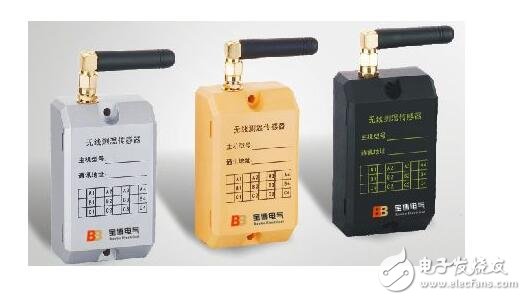
At present, at home and abroad, the main research of wireless sensor network node low-power hardware platform design and topology control, network protocol, positioning technology. Taking the light intensity sensor as an example, a wireless sensor network is implemented to turn off or on the indicator light according to the light intensity detected by the sensor. In the wireless sensor network, the ordinary node sends the light intensity data it collects to the network coordinator, the network coordinator sends the data frame containing the control variables to the contact with the indicator light, but also transmits the light intensity data to the computer through the serial port. By installing the background software on the computer, you can see the change of the light intensity signal. The light intensity data collected can be changed by covering the light intensity sensor. When the light intensity is relatively low, the curve decreases, and vice versa, the curve rises. This sensor network integrates embedded technology, sensor technology and short-range wireless communication technology, and has a wide range of applications. The system does not need to change the field structure, does not need any original fixed network support, can be quickly arranged, easy to adjust, and has a good maintainability and expansion.
Applications in the agricultural field
Agriculture is another important area for the use of wireless sensor networks. To investigate this possibility, Intel took the lead in setting up the first wireless sugar garden in Oregon. Sensors are distributed in every corner of the vineyard, checking the soil temperature every minute to ensure that the grapes can grow healthily for a large harvest. In the future, the researchers will implement a system to monitor the temperature of each sensor area, or the amount of harmful substances in that area. They even plan to use sensors on livestock, such as dogs, so that they can gather necessary information while on patrol. This information will help to carry out effective irrigation and pesticide spraying, thereby reducing costs and ensuring high efficiency on farms.
According to media reports, since the implementation of the National Science and Technology support Plan project "Northwest Advantageous Crop production precision Management System", it has mainly carried out special technical research, system integration and typical application demonstration for major crops such as apple, kiwi, salvitis, melon and tomato, which are advantageous agricultural products in the western region, as well as the ecological environment characteristics of drought and low rainfall in the western region. The wireless sensor network technology has been successfully applied in fine agricultural production. This sensor network advanced technology of real-time acquisition of crop growing environment is applied to agricultural production and provides new technical support for the development of modern agriculture. In the implementation of the project, Northwestern Polytechnical University, one of the undertaking units, used sensor network technology to develop sensor network nodes that can collect atmospheric temperature and humidity, CO2 concentration and soil temperature and humidity in real time.
The system consists of sensing node, convergence node, communication server, Web-based monitoring center, agricultural expert system and interactive farmer production guidance platform. The system has been applied in Ansai, Yangling, Yanliang solar greenhouse tomato, melon and other facility crops, Luochuan apple, Zhouzhi kiwi, Shangluo Salviorrhiza. Many sensing nodes collect the crop growth environment information in real time, and send the information to the aggregation node in the form of AD hoc network, which is uploaded to the real-time database on the Internet through GPRS. The agricultural expert system analyzes and processes the relevant data, produces production guidance and recommendations, and notifies farmers by short message. The system can also remotely control the equipment such as drip irrigation and ventilation of the greenhouse, and implement automatic management operations such as temperature and moisture according to the recommendations of the expert system. Northwest A&F University has studied the growth and development simulation models and precise quantitative management indicators of the dominant crops in the west represented by apple, kiwi, melon, tomato and salviorrhiza, aiming at the precision production requirements of the dominant agricultural products in the west and the environmental characteristics of the main agricultural facilities in the Northwest, and has established the growth and development, yield and quality databases of the above crops.
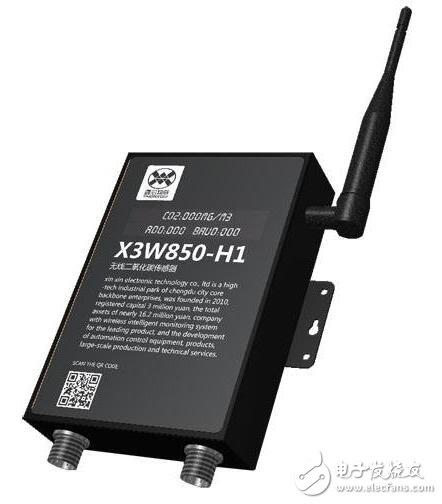
Aiming at the accurate management of high-quality fruit industry and Chinese herbal medicine, a simulation model of climate data generation in production area, a simulation model of development process with temperature and light as the main driving factors, a dynamic development model of main stem and leaf age of salvia miltiorrhiza, a model of photosynthetic production and dry matter accumulation of Salvia miltiorrhiza were established. Through technical assembly and supporting, six sets of precision management technical specifications for major crops have been developed, and six demonstration bases for vegetables, apples, kiwifruit and salvia miltiorrhiza have been established. Through precision seedling breeding and water and fertilizer management, the production efficiency increased by 11%. Compared with conventional orchards, the yield of apple precision demonstration garden increased by 12%, the high-quality fruit rate increased by 8%, the investment was reduced by 17%, and the total benefit increased by 1215 yuan per mu. Kiwifruit precision demonstration park yield increased by 15%, high-quality fruit rate increased by 10%, reduced investment by 16%, total efficiency increased by 1500 yuan per mu. The related technology has radiated more than 20,000 mu, and has accumulated more than 70 million yuan in benefits.
China is a big agricultural country, and the high quality and high yield of crops are of great significance to the country's economic development. In the current situation of declining agricultural natural resources and the deterioration of the ecological environment, if agriculture wants to further develop, it must be required to change the growth mode of agriculture and promote the modernization and informatization of agricultural development. The appearance of sensor network provides new ideas and powerful means for information collection and processing in various fields of agriculture. With the help of this technical means, soil temperature and humidity, air change, pH, carbon dioxide concentration, plant and animal pest information, growth information, crop irrigation, etc., can be provided in real time to help people find problems in agricultural production, so that agriculture may gradually shift from human-centered to information and software-centered production mode. With the continuous development of wireless sensor networks, relevant products have been initially launched and demonstrated in this field at home and abroad.
Application in building condition monitoring
Building condition monitoring refers to the use of sensor networks to monitor the safety state of buildings. As the building is constantly being repaired, there may be some safety hazards. While occasional small tremors in the earth's crust may not cause visible damage, they may create potential cracks in the pillars that could cause the building to collapse in the next earthquake. While traditional inspections often require buildings to be closed for months, smart buildings equipped with sensor networks can tell management about their status and automatically perform a series of self-repair tasks in order of priority.
All kinds of future skyscrapers may be equipped with such devices, so that the building can automatically tell people whether it is safe and stable. With the continuous progress of society, the concept of safe production has been deeply rooted in people's hearts, and people's requirements for safe production are becoming higher and higher. In the accident-prone construction industry, how to ensure the personal safety of construction personnel, as well as the preservation of construction materials, equipment and other property is the top concern of construction units. Any construction site has a large number of scaffolding, cables and other facilities and building materials, these things because of their high value, easy transportation, has become the object of theft.
In construction sites where there is no video surveillance, the number of pilfages at night and early in the morning is very high because managers cannot supervise the construction sites 24 hours a day. One of the biggest concerns on a construction site is safety. As most of the construction workers are migrant workers, their limited education level, lack of safety awareness, it is easy to cause personal injury and project losses due to illegal operations during construction. In order to avoid these dangers, video surveillance system is particularly important.
Urban pollution has always been one of the negative impacts brought by construction sites. Due to excessive sand, gravel and cement materials, the air quality near the construction site is very poor, which brings a lot of changes to the public. Washing the cement truck will make the road near the site very muddy, and when the water evaporates, it will make the road uneven. These uncivilized behaviors are what investors need to pay attention to. Due to the limitations of the construction environment, the safety management of equipment and materials is not perfect, and some employees' awareness of self-protection is weak, which provides opportunities for criminals. How to introduce technology into the construction site and create a digital construction site has become a key consideration for many construction units. Monitoring of the foundation stage: deep foundation pit support, foundation groove excavation and artificial hole digging pile construction have been included in the special treatment content. This phase of construction has been the focus of monitoring. Into the ground and floor construction stage, the building is open around the building, the work surface is wide, the construction personnel are more, and the various sub-projects are often cross-working, requiring that the safety precautions and quality requirements should be considered. Such as the key monitoring objects are, inspection, concrete transport, pouring and ramming, maintenance, formwork installation, reinforcement installation and binding, concrete pouring and ramming, construction personnel helmet and safety belt wearing, safety net Settings of buildings, as well as stairway, elevator, wellhead protection, reserved openings, pit and well mouth protection, balcony, floor, roof and other border protection and operation facing border protection. According to the characteristics of high-rise operations, a number of monitoring points can be set, such as the safety net setting of buildings, the border protection of construction personnel, the helmet of construction personnel, the erection of external scaffolding and landing bamboo scaffolding, the fixed and use of cable wind rope, the installation and use of hanging baskets, the intake port of the suspension plate and the protection of the floor discharge platform, the installation and operation of tower cranes and winches.
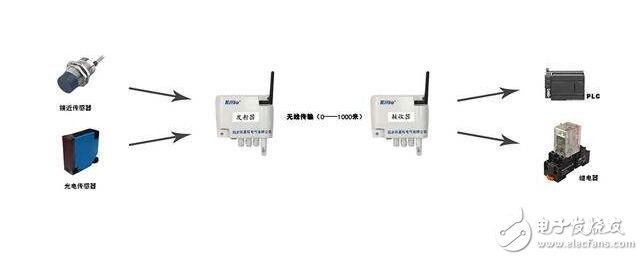
Through ADSL or wireless access to the Internet, the key installation of network cameras or wireless network cameras in the material storage and construction surface, the installation of client software or Internet Explorer on the ordinary computer in the security room can be multi-screen monitoring through the network, and the video file can be directly saved in order to obtain evidence after other circumstances occur. In the office or at home, as long as you can access the Internet, the use of Internet Explorer browser can see the real-time images of various monitoring points, to achieve remote monitoring in the car or on a business trip, equipped with a laptop computer and wireless network card, you can access the Internet anytime and anywhere to monitor or tour, you can also set up a large screen TV wall for centralized monitoring. Monitoring site can achieve any switch of the screen, timing switch, sequence switch and control of front-end equipment, as a management department of the construction company, can see the situation of the site through the INTERNET in real time, and has been installed in a site of wireless monitoring of the front end and the middle of the transmission part, can be used directly in other new sites, convenient and flexible. And reduce the input, is a good assistant to management.
Applications in special environments
Wireless sensor network (WSN) is one of the research hotspots in the field of information, which can be used to collect, process and transmit signals in special environment. The wireless temperature and humidity sensor network is based on PIC single chip microcomputer as the core, and the hardware circuit of the temperature and humidity sensor network node is designed by integrating humidity sensor and digital temperature sensor, and the wireless transceiver module communicates with the control center, so that the sensor node of the system has low power consumption, reliable data communication, good stability and high communication efficiency, and can be widely used in environmental detection.
With the interpenetration and combination of computer network technology, wireless technology and intelligent sensor technology, a new concept of networked intelligent sensor based on wireless technology is generated. This networked intelligent sensor based on wireless technology enables data from industrial sites to be transmitted, published and shared directly on the network through wireless links. Wireless communication technology can provide high-bandwidth wireless data links and flexible network topology for communication between various intelligent field equipment, mobile robots and various automation equipment in the factory environment, effectively make up for the shortcomings of wired networks in some special environments, and further improve the communication performance of industrial control networks. There are also some important application areas of sensor networks, such as oil pipelines usually pass through large areas of uninhabited areas, and the monitoring of pipelines has been a difficult problem, and traditional human inspection is almost impossible. Existing monitoring products are often complex and expensive. The wireless sensor network arranged on the pipeline can monitor the condition of the pipeline in real time, and any damage or malicious damage can be learned in real time in the control center. Researchers at the University of California, Berkeley, believe that if California applied this technology to electricity usage monitoring, the power control center could save $700 million to $800 million a year.
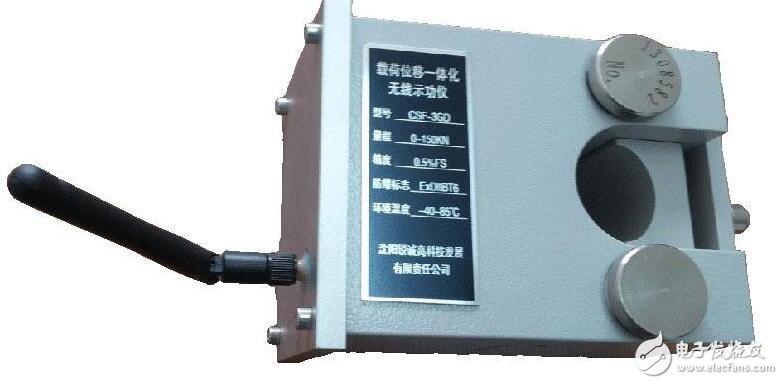
When transporting some special items, there are higher requirements for the environmental parameters of the container. Wireless sensor networks can monitor parameter changes well. The received signal strength indication (RSSI) is a location algorithm based on the distance between nodes. The multi-point location algorithm can realize the precise location of wireless sensor network nodes. The algorithm is simulated and tested in the experimental environment of network nodes. The experimental results show that the algorithm meets the requirement of RSSI multi-point positioning. Warehousing operations need to be equipped with advanced warehousing monitoring and management systems. In addition to the traditional storage operation management information system based on wireless sensor network storage environment monitoring and storage operation equipment operating status monitoring functions, can build a wireless sensor network based storage monitoring management system, so as to achieve the unified computer management of storage information, storage environment monitoring, storage equipment monitoring, storage operation scheduling. Due to the inherent technical characteristics of wireless sensor network, the application of wireless sensor network to warehouse monitoring and management needs to solve three key technical problems according to the particularity of storage objects, namely, the development of wireless sensor network node equipment with single-node and multi-parameter detection and transmission capabilities, and the establishment of hybrid wireless sensor network; This paper focuses on the three-dimensional deployment of wireless sensor network nodes to meet the requirements of network coverage and connectivity. One of the effective node deployment schemes is to divide the storage space based on cubic or spherical finite element method. The comprehensive processing and information fusion of several types of information are studied to meet the need of unified computer management of warehousing information and warehousing operation scheduling.
Finally:
Wireless network is a network data transmission system that uses radio waves instead of cables to realize the network data transmission system independent of the location of computer equipment, which is an important direction of the development of modern data communication system. Wireless sensor network (WSN) is one of the hot research topics in information field, which can be used to collect, process and transmit signals in special environment. Wireless sensor network (WSN) is a new technology of information acquisition and processing, which has been used more and more widely in real life. At present, wireless sensor network, as a new technology to obtain and process information, is being widely studied. With the development of communication technology, embedded technology and sensor technology, sensors are gradually developing into intelligent, miniaturized and wireless networking.
免责声明: 本文章转自其它平台,并不代表本站观点及立场。若有侵权或异议,请联系我们删除。谢谢! Disclaimer: This article is reproduced from other platforms and does not represent the views or positions of this website. If there is any infringement or objection, please contact us to delete it. thank you! |


